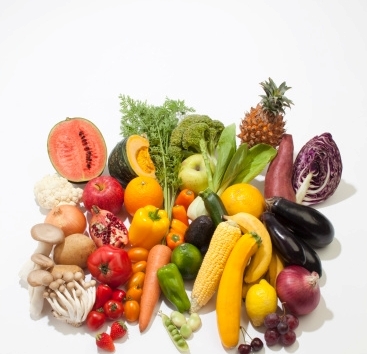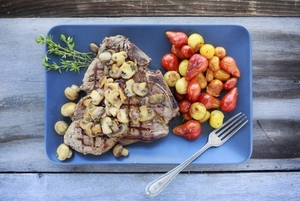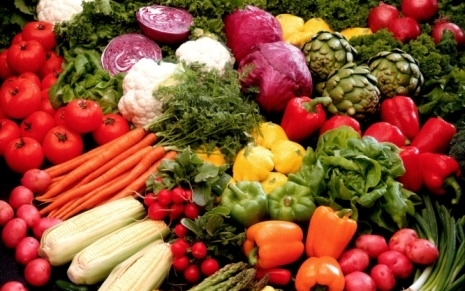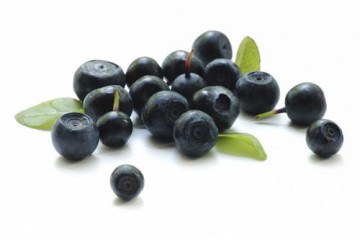Healthy Eating Tips To Avoid Fat
The key to the success of any plan for healthy eating tips to eat what you like, but to exercise moderation when it comes to the less healthy foods. While some fat in the healthy eating diet is necessary, and it would be a mistake to try to eliminate all fat from the healthy diet, most people simply eat too much fat. Cutting back on fat is an important part of creates a healthy diet and lifestyle.

Reasons for cutting the level of Fat
There are a number of good reasons for cutting back on levels of healthy eating of dietary fat. Those reasons include:
- Lowering levels of dietary fat helps in weight loss and weight management. Fat contains twice as many calories per gram as protein and carbohydrates, so eating less fat usually means consuming fewer calories.
- Lowering fat has been shown to decrease the risk of heart disease. Dietary fat, particularly saturated fat, has been implicated as a factor in heart disease and elevated cholesterol levels.
- A low fat diet may help to reduce the risk of some forms of cancer. Although this matter has not been totally settled, there have been a number of studies that indicate that a diet low in fat can keep certain cancers at bay.
- And of course eating fewer high fat foods means that you will be able to enjoy many more low fat alternatives, such as vegetables, fruits and whole grains. Since these types of foods tend to be nutrient rich and low calorie, they can be enjoyed guilt free.
Healthy Eating Tips Regarding Low fat
Of course cutting back on dietary fat is easier said than done, so we have compiled the list of healthy eating tips for low fat healthy eating to help you get started.
- In place of spreads like peanut butter and full fat cream cheese, use lower fat alternatives such as low fat cream cheese, jellies, jams, fruit spreads, apple butter, mustard, low fat margarine, or low fat mayonnaise.
- Use high fat foods as an occasional treat, not as a dietary staple.
- Use reduced fat or nonfat salad dressings whenever possible. When eating out, request the salad dressing on the side so you can compare the amount used.
- Instead of butter or sour cream, top baked potatoes with plain nonfat or low fat yogurt. Other delicious baked potato toppings include steamed broccoli, cottage cheese, salsa, low fat cheese and low fat or nonfat sour cream.
- Get creative with seasonings to add flavor without adding fat or calories. Garnishes like lemon juice, herbs, salsa or green onions are great toppings for vegetables and salads.
- Use high fat toppings sparingly. For instance, instead of using a tablespoon of blue cheese salad dressing, try using only a teaspoon.
- Avoid full fat dairy products whenever possible. Using skim milk or 2% milk instead of whole milk can make a huge difference in your daily fat intake. Likewise, low fat alternatives to ice cream, such as frozen yogurt, provide the entire flavor and none of the fat.
- Low fat cheeses also provide a great alternative to full fat varieties. Most varieties of hard cheeses are available in low fat versions.
- Use low fat varieties of popular snacks. Ginger snaps angel food cake, vanilla wafers, fig bars; jellybeans, hard candy and gumdrops are all excellent choices for a sweet treat.
- Instead of potato chips, which are very high in fat, choose pretzels, unbuttered popcorn and other healthier alternatives.
Healthy Eating Tips regarding Preparation
- In addition to choosing the right healthy eating foods, the preparation of the foods you buy is very important to keeping fat levels as low as possible.
- Proper low fat food preparation starts with buying the leanest cuts of beef, pork, fish and chicken, and removing the skin and fat from chicken breasts, legs and thighs.
- Broiling, backing and grilling are generally the lowest fat methods for preparing the meats and seafood you buy.
- Try to avoid frying foods, and if you must fry, try to use a pan that allows the excess fat and oil to drain off easily.
- Healthy, low fat cooking does not have to be boring or unappetizing. There are great many excellent recipes for low fat, healthy meals that are easy to make.
- The most important thing is to be an educated consumer and shop carefully for the healthiest produce, meat and seafood.
-
By Drinking One Glass On Empty Stomach You Will Be Able To Stimulate Fat Loss
If you are looking for an instant solution that will help you lose
-
Find Out How To Lose 100 Pounds Easily Without Weight Loss Pills And Potions
You are staring at your umpteenth bland plate of salad or bowl of cab
-
Healthy eating and dining out
Healthy eating lifestyle is just that, a
-
Best Herbal Weight Loss Diet Pills To Lose Weight In A Healthier Way
Which herbal supplement for weight loss can provide us great results?
-
10 Motivational Weight Loss Quotes
1. Do what is the best for you. Julius Erving: “If you’re no
-
Mayo Clinic Diet: What To Know
Overview
- DON'T MISS
- This Exercise Is More Powerful Than 1,000 Sit-Ups: Spare 60 Seconds A Day And In Only A Month You Will Have A Flat Stomach
- 18:6 diet (a.k.a LeanGains)
- Infused Waters That You Must Try
- Calorie and Healthy Eating
- Wedding Diet
- How to Keep Your New Year’s Resolutions
- 8 Holiday Treats Under 80 Calories
- Cheat-Proof Your Diet
- Is a Gluten Free Diet Beneficial For Weight Loss?
- Drink This Green Beverage Every Day And Your Body Will Be Cleaned Of Toxins!




